Affiliate links on Android Authority may earn us a commission. Learn more.
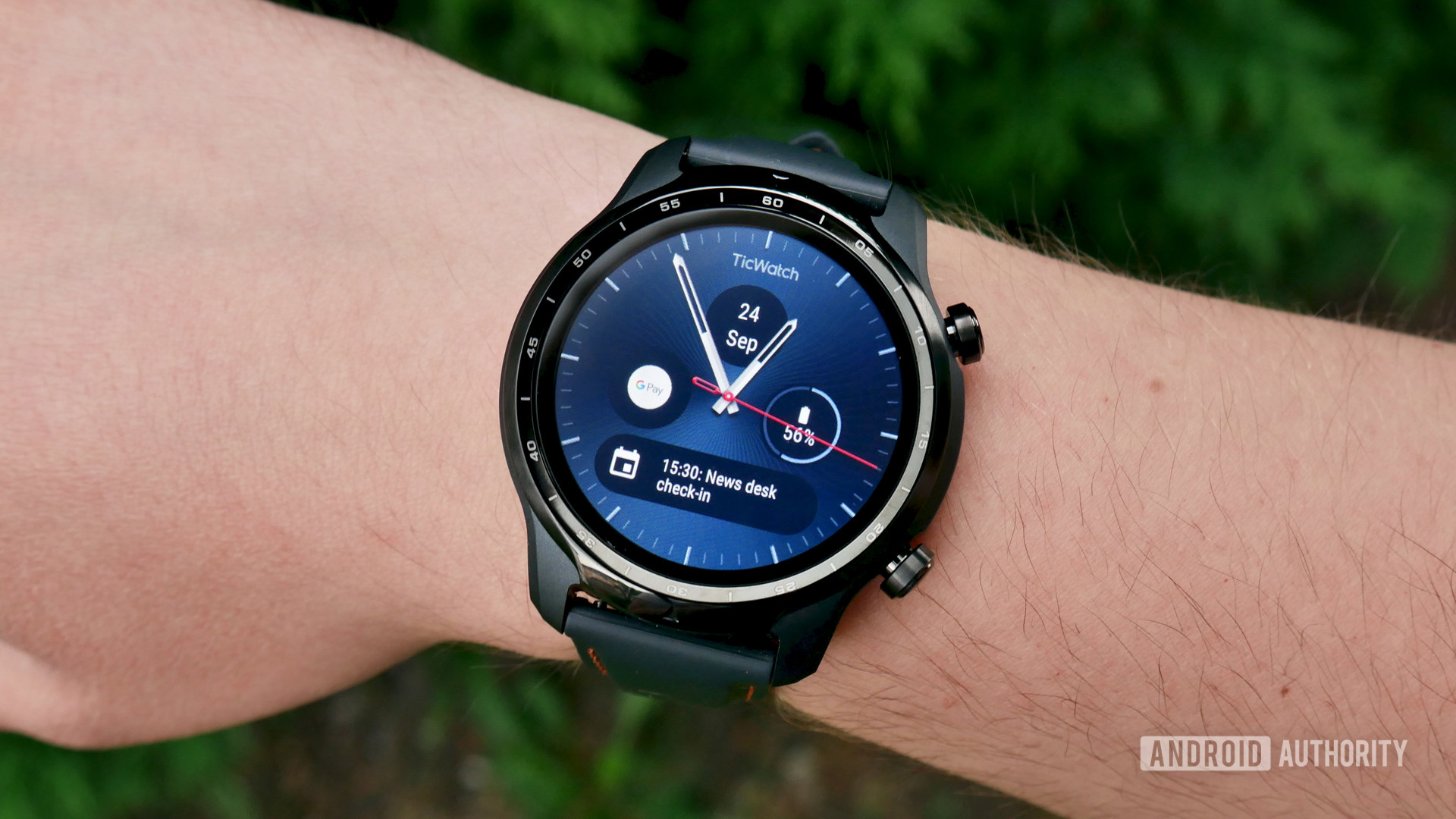
Mobvoi TicWatch Pro 3
MSRP:
What we like
What we don't like
Mobvoi TicWatch Pro 3
There are few smartwatch makers that have shown more dedication to keeping Wear OS from falling into oblivion than Mobvoi, an AI company and creator of the TicWatch series of smartwatches. It’s therefore fitting that Mobvoi should be the first to debut a smartwatch powered by new Qualcomm Snapdragon Wear silicon which is touted as the possible savior of Google’s woefully underserved wearables platform.
That watch is the TicWatch Pro 3. The third iteration of the Chinese firm’s flagship wearable packs a raft of new features, top specs, and subtle design tweaks in a familiar package.
This is Android Authority’s TicWatch Pro 3 review.
Design and hardware
The TicWatch Pro 3 GPS — which for brevity we’ll just call the TicWatch Pro 3 — follows the same general design blueprint as previous TicWatch Pro models. If you didn’t like the dual-material, rugged-like look before, you still won’t like it now. I think it looks fine, but it’s also quite nondescript. It lacks the class and style of competing watches from Samsung and Apple.
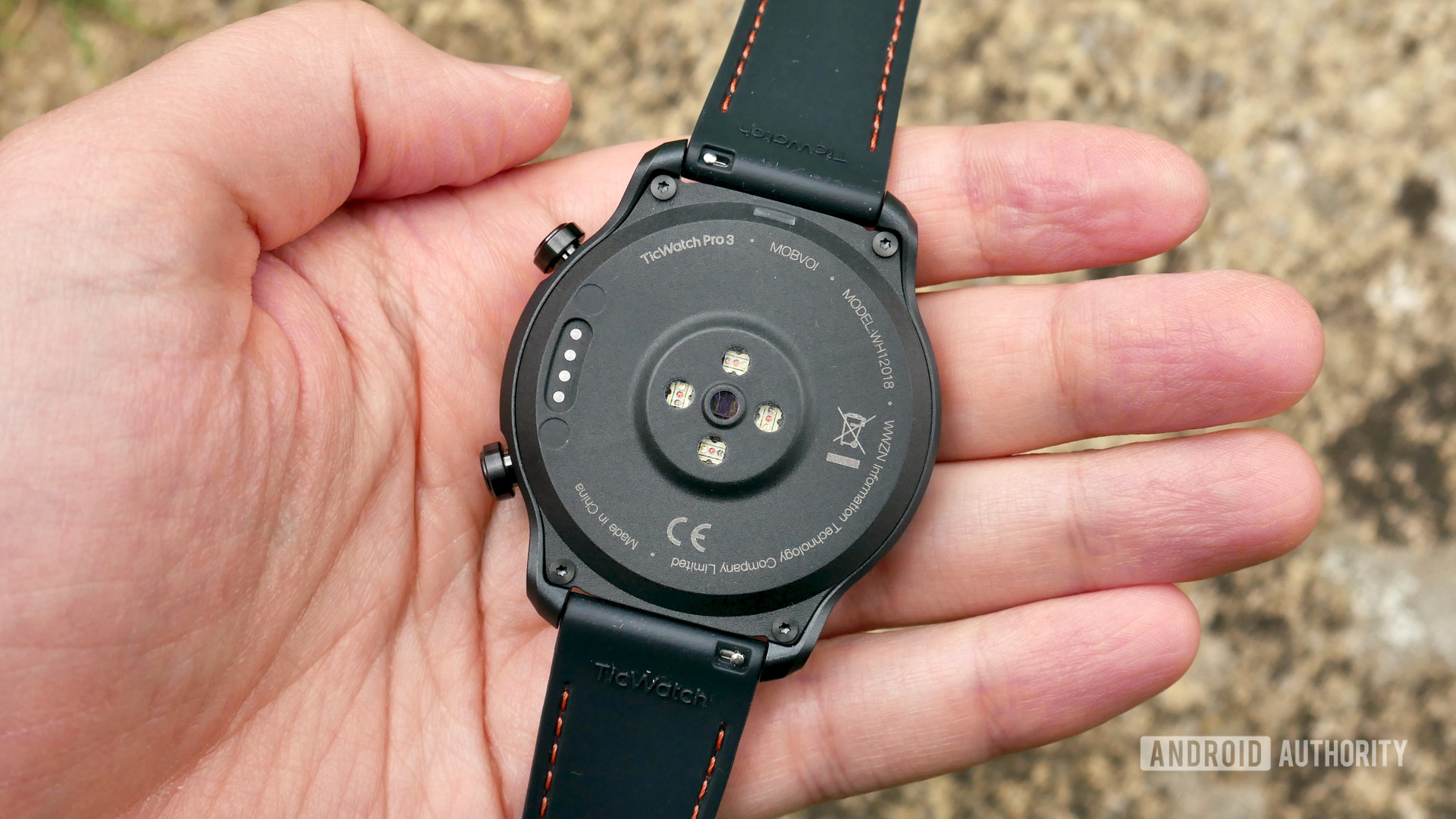
Mobvoi has made some welcome tweaks to the design, however. While still a large watch, it’s nowhere near as chunky as previous iterations. The TicWatch Pro 3 is 0.4mm thinner than its direct predecessor and 28% lighter. You can certainly feel the latter, which is extra impressive when you consider that the TicWatch Pro 3 has a significantly larger battery than the TicWatch Pro 2020 or its LTE counterpart. Despite this newfound lightness, it’s still a big watch. It is larger than the Galaxy Watch 3, for example, and if you’ve got small wrists you might want to look elsewhere.
Other design changes are more subtle. You’re still getting a stainless steel and plastic sandwich, but the bezel is thinner and doesn’t stretch out at the top and bottom. The two buttons on the right side are also spaced further apart, and the display is a fraction larger.
All of these changes lead to a watch that’s more comfortable, but also easier to interact with. Unfortunately, this comes at the cost of durability. Unlike previous TicWatch Pro models, the TicWatch Pro 3 is not MIL-STD-810G certified. Mobvoi isn’t using Gorilla Glass this time around either, though it says it has “high strength cover glass with anti-fingerprint coating.”
It’s also a shame there’s still no physical input besides the buttons. A rotating bezel or crown isn’t essential due to the larger touchscreen, but personally, I much prefer physical scrolling methods on a smartwatch.
Speaking of the screen, the TicWatch Pro’s defining feature is its dual-display. It pairs a 1.4-inch AMOLED panel with a transparent Film Compensated Super Twisted Nematic (FSTN) LCD display. The 454 x 454 resolution panel is crisp, clear, and bright enough for use in sunlight. Mobvoi has a solid track record for smartwatch displays and that continues here.
The secondary transparent display activates to save power while the watch is idle, at low battery, or permanently via the watch’s Essential Mode. You don’t get any smarts from this secondary display, only the basics such as the time, date, and a step counter. This was previously a necessary feature on the TicWatch Pro line to fix the questionable battery life. However, as we’ll see shortly, that’s not a concern this time around. Nevertheless, it’s a nice option to have if you want to save some juice by not using the always-on display.
At launch, you can only get the watch in Shadow Black, and it comes with a 22mm silicone strap with orange stitching, though this is interchangeable due to the universal design. The strap looks more premium than previous TicWatch bands, but at this price range, it’d be fair to expect something that’s genuinely premium like a leather strap.
The biggest changes to the new TicWatch are all under the hood. Most notably, the TicWatch Pro 3 is the first watch on the market to utilize the much-hyped Snapdragon Wear 4100 series.
Mobvoi skipped the Snapdragon Wear 3100 for its second-generation TicWatch Pro 2020 and TicWatch Pro LTE variants, but the latest model is taking a giant leap from the Wear 2100 (a processor first unveiled some four years ago).
See also: The best Wear OS watches
The Wear 4100’s quad-core CPU boasts a 1.7GHz clock speed which is claimed to boost performance by 85% compared to the Wear 3100. In addition, there are also big improvements to the GPU — reportedly 2.5x faster — and increased power efficiency resulting from the shift to a 12nm process, as well as additional optimizations.
While Google’s own tweaks to the platform have helped narrow the performance gulf between Wear OS wearables like the TicWatch series and Samsung, Apple, and even Fitbit’s watches, there’s only so much you can do with software. Thankfully, at least based on my experience with the TicWatch Pro 3, the new chipset exercises any memories of the laggy Wear OS watches of old. The software quirks are still there (we’ll get to those later), but there’s a smoothness to the UI animations and fast transitions between different apps that we haven’t really seen from a Google-powered watch before.
Yet, the bigger draw is the impact the new chipset has on battery life. The general rule for a Wear OS smartwatch has always been that you would need to charge it basically every day to avoid battery anxiety. That’s just not the case with the TicWatch Pro 3.
With the screen brightness at max, plus every ambient tracking feature (except sleep tracking) and the always-on display turned on, the TicWatch Pro 3 still managed to see a full two days with around 15% to spare. When using the FSTN display while idle, this went up to three and a half days on average. Mobvoi also claims you can get up to 45 days of battery life using just Essential Mode. I haven’t tested this, but I did use it for a day and the percentage had barely dropped from full.
Mobvoi has found the secret sauce for Wear OS smartwatch hardware.
As for recharging the watch, it took around 1hr 45 mins to get back to full. The magnetic charging puck is a proprietary affair and it has a bit of a weird shape. Unlike previous rounded TicWatch chargers that encased the entire watch, this bean-shaped puck only attaches to a small part of the rear case. This makes it rock around on a table so it’s quite easy to accidentally dislodge it.
Charger gripes aside, this is the best battery experience you’ll get from any Wear OS watch by some distance. I’m not sure if it’s the efficiency of the Wear 4100 SoC or the huge 577mAh cell, but Mobvoi has found the secret sauce.
One thing that should be noted is that we’re talking about the Snapdragon Wear 4100, not the 4100 Plus SoC. The Plus version of Qualcomm’s chip has a co-processor designed for low-power functions in ambient mode. It’s a shame the TicWatch Pro 3 misses out on this. There may have been a potential for even greater battery life gains. Nevertheless, the TicWatch Pro 3 raises the bar for Wear OS smartwatch performance and battery life.
Specs
| Mobvoi TicWatch Pro 3 | |
|---|---|
Display | 1.4-inch retina AMOLED + FSTN 454 x 454 resolution |
Case | 47 x 48 x 12.2mm ~41.9g Stainless steel and plastic |
Band | 22mm Universal connector |
Power | 577mAh battery Proprietary magnetic charger No wireless charging |
Processor | Qualcomm Snapdragon Wear 4100 |
RAM | 1GB |
Storage | 8GB |
Software | Wear OS |
Connectivity | Bluetooth 4.2 LE NFC GPS |
Sensors | Speaker/Mic PPG heart rate sensor Accelerator Gyroscope Ambient light sensor Barometer |
Tracking | Heart rate Blood oxygen (SpO2) Stress Steps Sleep 10+ workouts |
Durability | IP68 water resistance and pool swimming suitable |
Smartwatch features
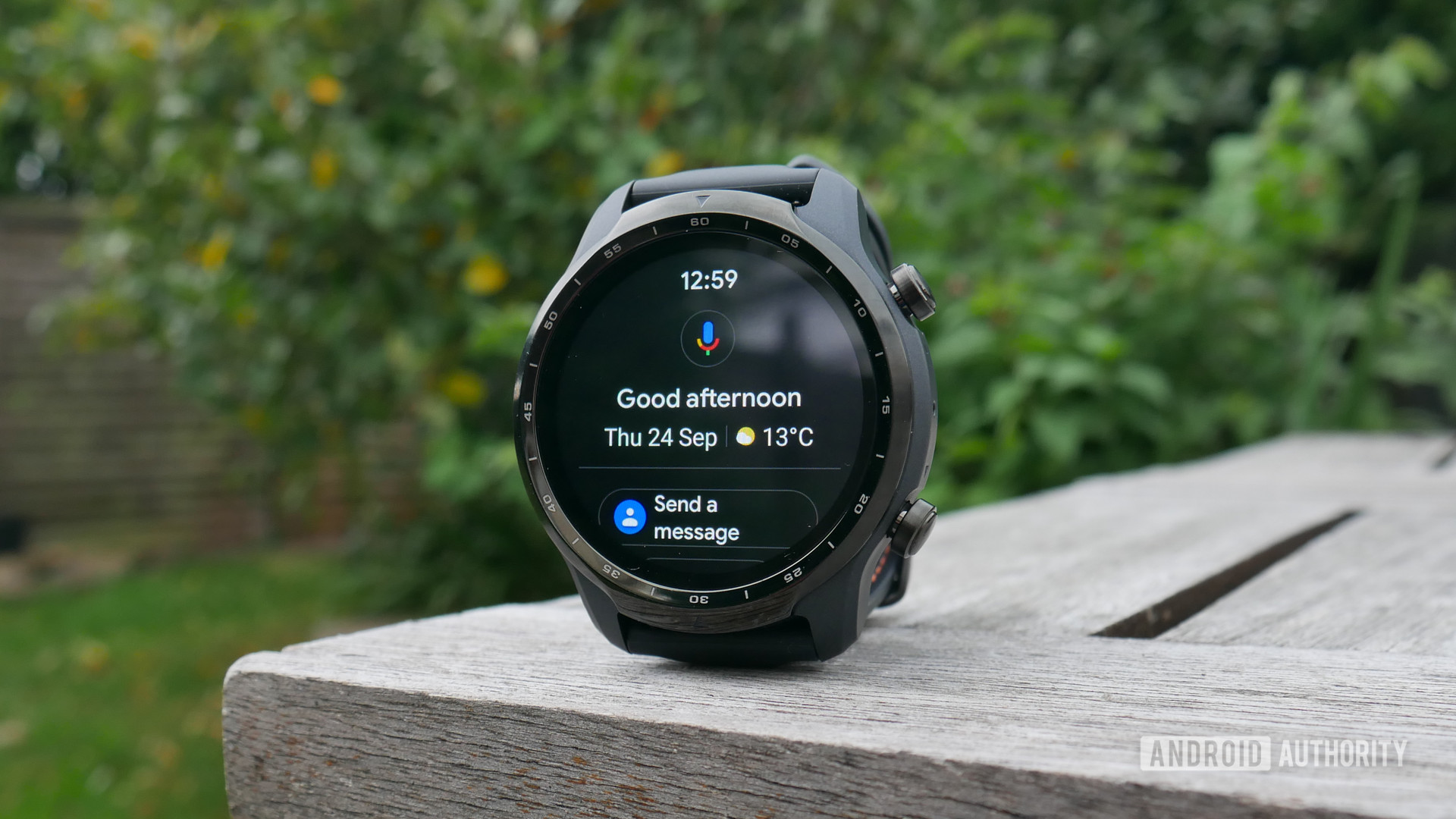
As noted, the TicWatch Pro 3 runs on Google’s Wear OS — a platform that has, quite deservedly, seen its fair share of criticism over the years.
The TicWatch Pro 3 runs the latest version of Wear OS, which is based on Android 9 Pie. Yes, the now two-year-old Android Pie. For whatever reason, Google skipped Android 10 for its wearables, though an Android 11 update is reportedly planned for 2021.
Not a lot has changed since the initial Wear OS 2.1 update in early 2020 which introduced the watchOS-like Tiles to the UI. The weather tile has been improved and you can add more Tiles now, but most of the software tweaks over previous TicWatch models are optimizations for the new SoC that came in late Fall.
Wear OS is long overdue a major update.
The best part of Wear OS is the access to Google’s wider ecosystem. This includes the Play Store, Google Pay (with NFC payments), Discover, and of course the Google Assistant, which can talk back to you via the watch’s speaker.
There are some changes. Mobvoi has switched to an app drawer with two columns rather than the traditional list view. This is similar to the OPPO Watch. It’s much more pleasant due to the larger apps icons, but also easier to navigate with quick swipes of the touchscreen. The secondary button on the TicWatch Pro 3 can also be mapped to any app you choose.
Mobvoi’s software suite dominates the pre-installed app list. There’s some duplication here with the Google Fit apps, but the TicHealth family expands the health and fitness features beyond Google’s limited reach. There are also TicWatch-bespoke watch faces, most of which are annoyingly adorned with the TicWatch name. Of course, there are plenty of other watch faces available via the Play Store.
Related: The best Wear OS apps for Android
The TicWatch Pro 3’s overall quality as a smartwatch is hindered by the lack of love shown to Wear OS. It’s long overdue a major update. The number of genuinely useful apps is on the low side, and Assistant integration isn’t as elegant as Android phones or even Assistant-enabled headphones.
Hopefully, Wear OS and the TicWatch Pro 3 both get to enjoy some new features with the Android 11 upgrade. For now, though, it’s a usable but underwhelming smartwatch OS.
Fitness and health tracking
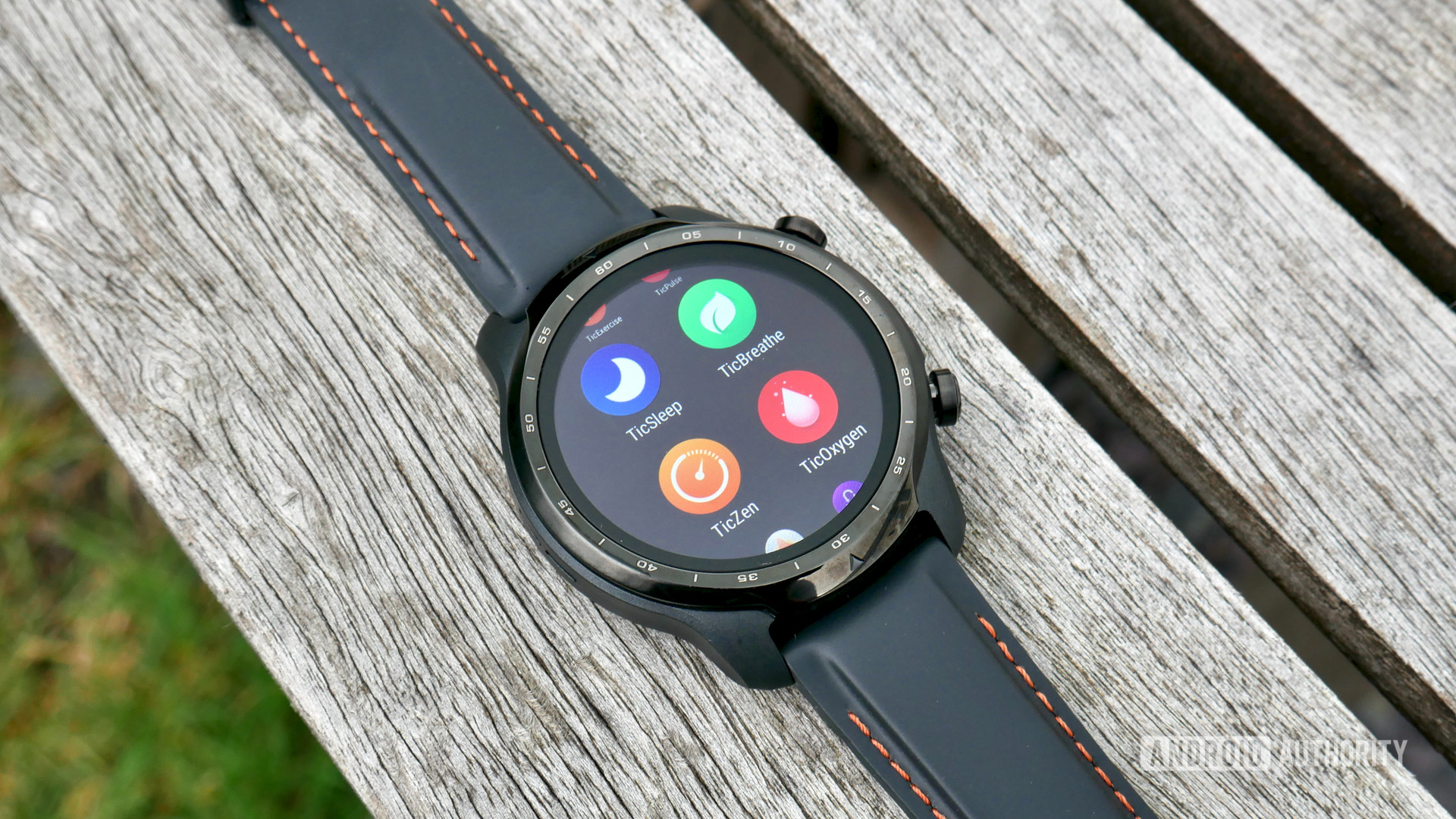
The range of fitness and health features and apps in the Tic-family has grown since the last TicWatch Pro generation.
For starters, the preset workouts in the TicExercise app have increased in number to a total of 13. This includes basic workouts like outdoor walking, outdoor/indoor running, cycling, and pool swimming, but also more niche presets for yoga, elliptical machines, and trail running.
Compared to the barebones Google Fit suite, there are plenty of options. However, accuracy isn’t always the TicWatch Pro 3’s strong suit. For example, the onboard GPS often puts you a street or two away from your actual route, and it’s hit or miss whether you get a map result after a workout at all. Likewise, the AI-powered TicMotion feature that is supposed to recognize activity automatically occasionally fails completely or only captures half of the workout. I’ve had half-hour walks show as five-minute strolls.
See also: The best fitness trackers
Elsewhere, the TicWatch Pro 3 makes use of its variety of hardware sensors to track heart rate (TicPulse) and blood oxygen saturation (TicOxygen). Activity-based and passive heart rate tracking was well within the margin of error during my testing, with results mirroring my Xiaomi Mi Band 3 with some very minor anomalies.
SpO2 monitoring is brand new to the TicWatch Pro 3 via the PPG. It is a welcome inclusion considering the feature’s increasing ubiquity in top-tier smartwatches. The 24-hour tracking is a little redundant as it will record once every hour and you need to hold very still to take a reading. This meant I only ever had two or three results each day, and notably none during the night. However, once the watch is correctly positioned it’s simple and fast to get a quick manual result.
Sadly, the TicWatch Pro 3’s SpO2 tracking doesn’t ever go any deeper than a percentage result. Like every tracking feature on the watch, the pulse oximeter gives you the raw data and that’s it — no further information or advice. It will tell you when it registers an “abnormal” reading, but those looking for a device that can detect issues like sleep apnea may want to look at a more dedicated fitness-focused smartwatch.
Also new is stress tracking (TicZen), which is combined with a variety of breathing exercises (TicBreathe) to help monitor and lower your stress levels. The watch can also measure environmental sound (TicHearing) and warn you if noise levels become dangerous to your hearing.
TicHealth is a perfectly decent app suite for casual health tracking, but the smartphone companion app is poor.
Finally, the TicWatch Pro 3 supports sleep tracking (TicSleep), but I wouldn’t put too much stock in the sleep data the TicWatch Pro 3 captures. With passive tracking enabled, the TicWatch Pro 3 occasionally mistook my work-from-home life as short nap sessions (I wish). Also, this is still a big watch and while it’s pleasant to wear during the day, it’s quite an uncomfortable bedfellow.
Related: The best sleep trackers you can buy
The only real omission in terms of hardware features is an electrocardiogram (ECG) sensor. This is available on a small selection of other watches in this price bracket, however, with Mobvoi’s other tracking features leaving something to be desired already. It should probably work on those before adding another sensor to its wearables.
All of the data the TicWatch Pro 3 collects feeds back to your TicHealth profile and, optionally, a leaderboard to compare your exercise stats against other TicWatch users. This is perfectly usable on the watch itself, but if you want to see the biometric data on your phone then you’ll need the Mobvoi app.
Bluntly, the Mobvoi app is dreadful. It’s not designed solely to function as a smartwatch companion, but instead a home for Mobvoi services, adverts, and a store so you can buy more Mobvoi products.
The Health Center, where all the actual data is stored, is buried within an inconspicuous sub-menu under the Devices tab. To make matters worse, essentially everything here is just a blown-up version of what you can already see on your watch. It’s all very rudimentary and near redundant.
Mercifully, you can share data with apps like Google Fit, Strava, and Runkeeper. This isn’t an all-encompassing solution and there can be some compatibility issues, but until Mobvoi decides to take its core app seriously it’s the best you’re going to get.
Overall, the TicWatch Pro 3 is a decent smartwatch for casual fitness and health tracking that is ultimately let down by a lack of any data analysis or health advice. This is further compounded by the woeful smartphone companion app.
Price and competition
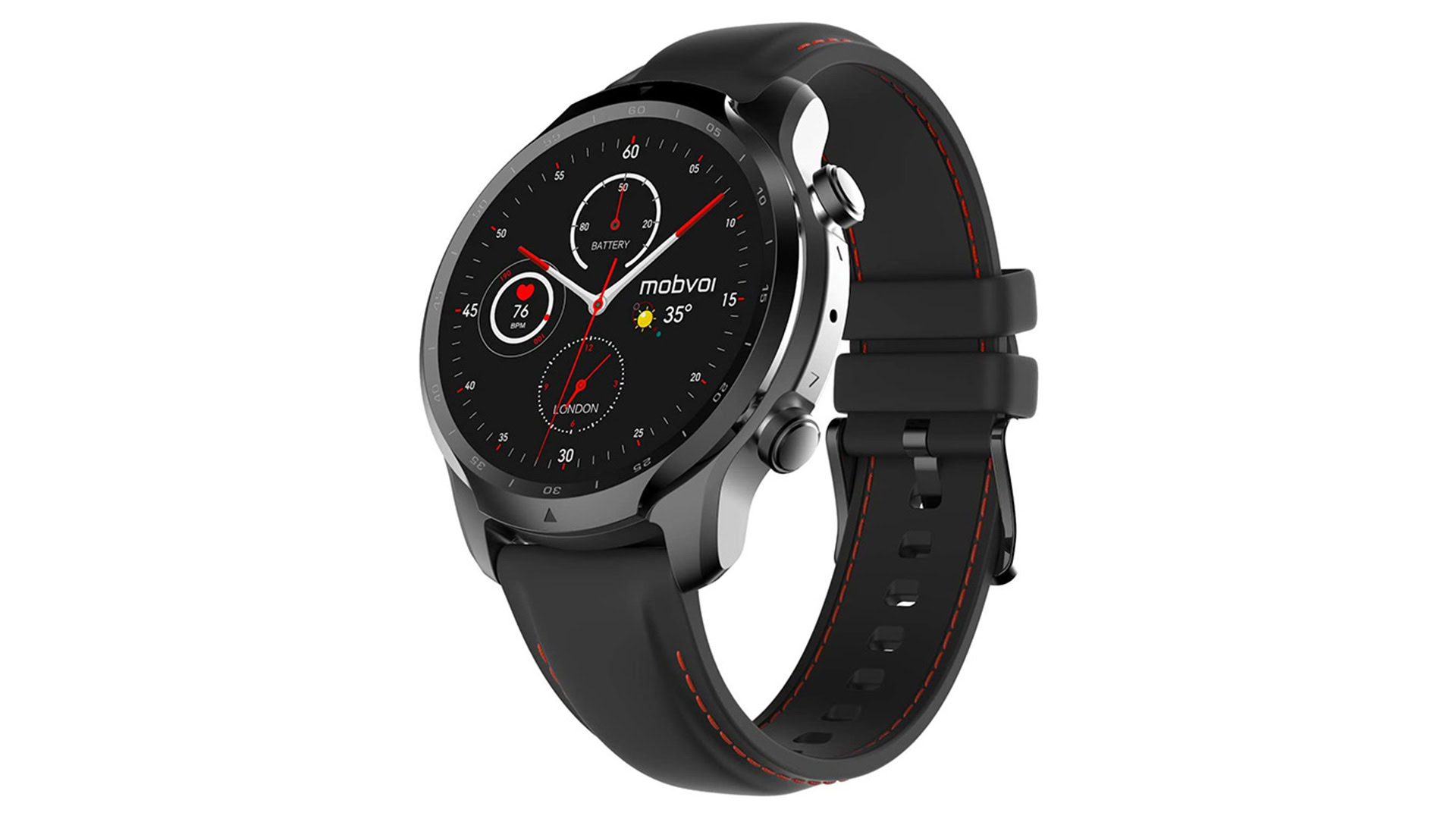
Mobvoi has traditionally positioned its smartwatches on the more affordable end of the smartwatch spectrum, but that’s not the case here.
The TicWatch Pro 3 is priced at $299 in the US, £289 in the UK, and €299 in Europe. That’s a price hike of $40 in the US which puts it in the same bracket as the Fossil Gen 5. The Gen 5 has a more refined design, though the huge improvements in battery life and performance with the TicWatch Pro 3 make it a close rival. Look beyond Wear OS, however, and the TicWatch Pro 3 has some extremely tough competition.
Read more: The best smartwatches you can buy
If you’re an iPhone user, you’d frankly be crazy to consider the TicWatch Pro 3 over the Apple Watch SE. The app support is beyond anything Wear OS can offer, the health tracking is improved, and Apple’s typical excellence in pairing top hardware with top software is showcased for just $279 on the entry-level model.
Other non-Wear OS rivals include Samsung’s Galaxy Watch 3 or the Galaxy Watch Active 2 that come in at $100 more expensive and $80 cheaper than the TicWatch Pro 3, respectively. Both have their own issues with wonky health tracking, but Tizen is still a more fully-fledged OS. Samsung’s overall design work is impeccable as well. There are even some vague rumors that the Galaxy Watch 4 may run Wear OS, but even if it doesn’t, expect it to be a strong rival regardless.
There’s also the Fitbit Sense for $329. It offers superior biometrics tracking and even longer battery life, though the software experience is a little lacking. You may instead want to look at the Fitbit Versa 3, which offers the core Fitbit experience for a little less without losing much overall. Meanwhile, the $305 Garmin vivoactive 4 is our favorite fitness-focused smartwatch in this price bracket.
TicWatch Pro 3 review: Verdict
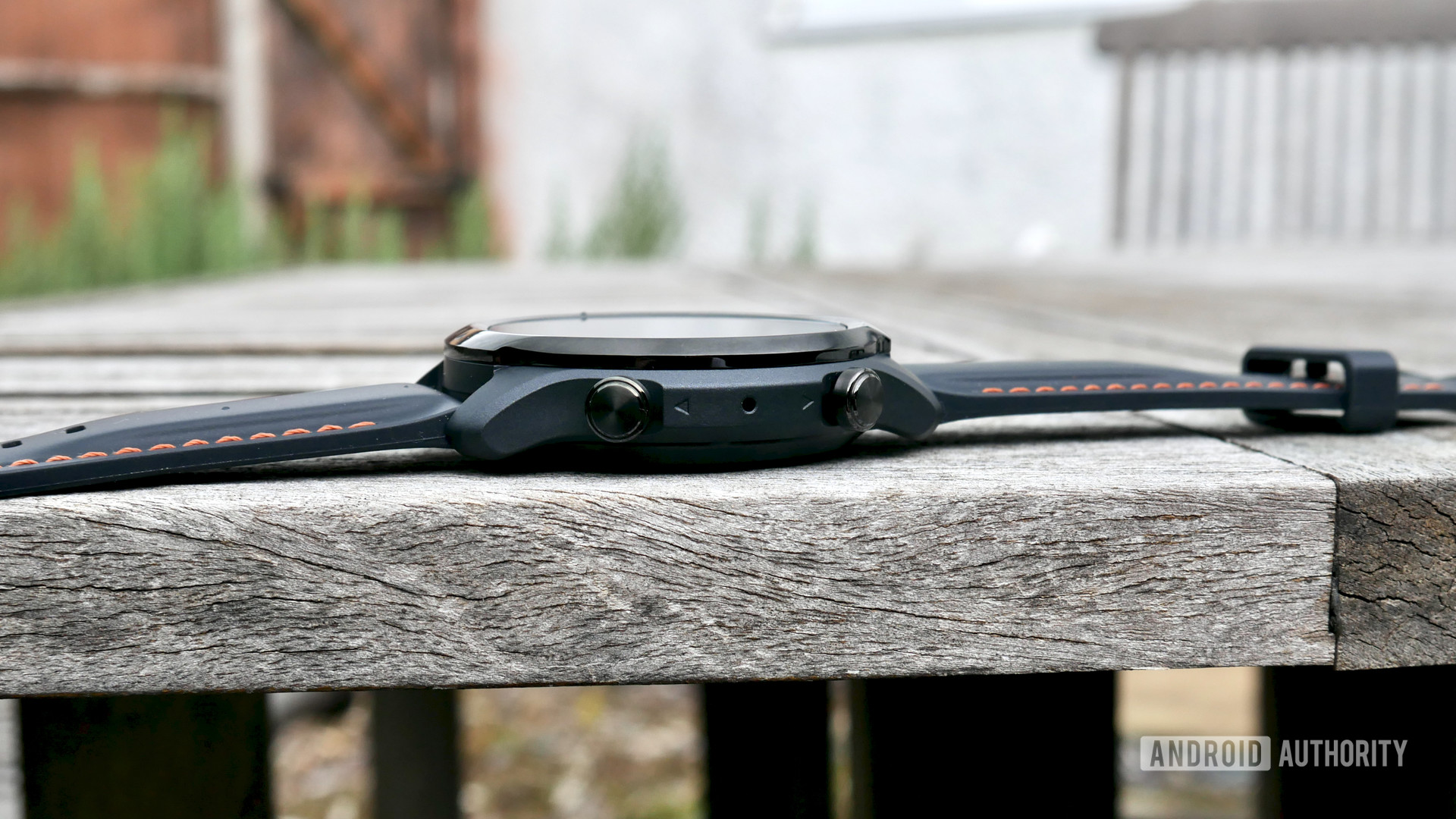
The TicWatch Pro 3 is the most feature-packed, long-lasting, and overall best TicWatch to date. However, it’s also the most expensive. It represents a new peak for Wear OS smartwatch hardware, but it’s competing at a level where nothing but the very best will suffice and is ultimately let down by its software — both Google’s and Mobvoi’s.
If you’re wedded to Google’s ecosystem, don’t mind a slightly bulky design, and are only casually interested in keeping fit and tracking your data, the TicWatch Pro 3 is a perfectly fine choice. For everyone else, there are better, more fully rounded options out there.
We’re getting closer, but the wait for a world-beating Google-powered smartwatch goes on.